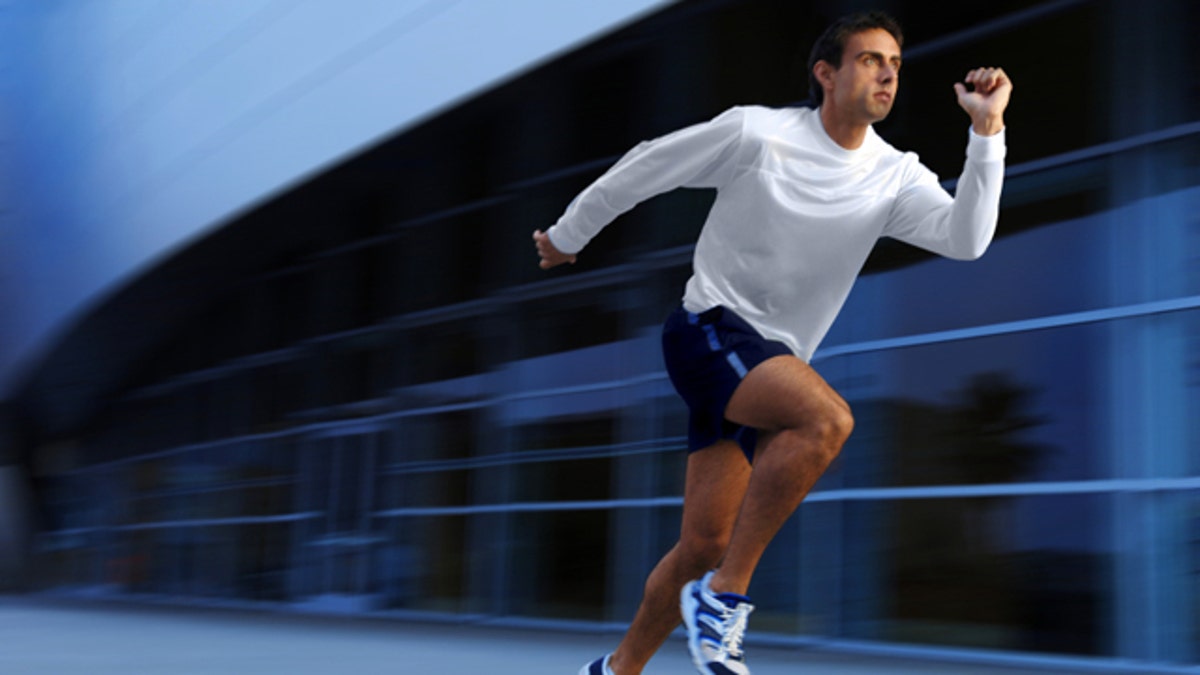
In the world of marathoners, "hitting the wall" happens when a runner depletes his or her energy and has no choice but to slow down. Now, a new study promises a mathematical solution to keep runners far from that wall.
By taking into account the energy it takes to run a marathon, the body's energy storage capacity and the runner's power, the researchers were able to accurately calculate how many energy-rich carbohydrates a runner needed to eat before race day and how fast to run to complete all 26.2 miles (42 kilometers).
"Quantification is really important for a competitive athlete who wants to know, 'Can I run at a target pace of six minutes [a mile], or is that too fast, or do I have to go six minutes and 10 seconds per mile?'" study researcher Benjamin Rapoport, an M.D./Ph.D. student in the Harvard-MIT Division of Health Sciences and Technology, told LiveScience. "That difference can make the difference between hitting the wall and actually meeting your goal."
Rapoport details his results tomorrow (Oct. 21) in the journal PLoS Computational Biology.
A runner's world
Rapoport knows what it's like to hit the wall. He's been running marathons for years, and experienced the exhaustion and pain of running out of fuel in the 2005 New York City Marathon.
"It feels a bit like you might feel if you're on a crash diet," Rapoport said. "Except that when you diet, it happens over the course of a few days, whereas a runner experiences it in the course of a few minutes."
Rapoport originally began studying the physiology of long-distance running in 2005, when he wanted to miss class to race in the Boston Marathon. His medical school professor gave him permission — but only if he'd return prepared to lecture the class on the physiology of marathons.
"Obviously, there was no way to say no," Rapoport said.
His post-race talk was such a hit that the professor invited him back the next year and the year after that. Eventually, Rapoport realized, his calculations on how the body uses energy in long-duration exercise went far beyond what was available in the scientific literature, leading him to turn the class assignment into a research project.
Fueling with carbs
The ability to run long distances depends mainly on three factors, Rapoport said. The major one — the one that separates casual runners from elite athletes — is aerobic capacity, also known as VO2max. The VO2max is like the power output of a motor, Rapoport said. It's the maximum rate at which the muscles can take up oxygen to keep working.
The next factor is the energy cost of running, which is the equivalent to miles per gallon in an automobile. The final factor is the body's gas tank: the storage space available for carbohydrates, particularly a carb called glycogen stored in the liver and muscles that is the body's main fuel during exercise.
By combining these factors, Rapoport created a mathematical model of how long and how fast runners of any size can go without hitting the wall. The model also helps define how much "carbo-loading," or consumption of carbohydrates, the runner should complete in the days before the race.
The model also reveals a physiological basis to one of running's biggest challenges, the Boston Marathon. Men ages 19 to 34 who want to run in the Boston Marathon must have a qualifying time of three hours and 10 minutes or less. Women of the same age must have a qualifying time of three hours and 40 minutes or less. These numbers aren't based on science, Rapoport said, but rather set to weed out all but about the top 10 percent of runners.
But as it turns out, there is science behind the qualifying times. For both men and women, the times are such that they'll challenge the fuel reserves of even the top runners.
"[The times] have evolved to a point that makes sense physiologically," Rapoport said.
Marathon preparation
The charts and calculations, available on the PLoS website, should help runners set a target pace and eat properly before the race, Mark Cucuzzella, a professor of family medicine at West Virginia University and the Coach and Captain of Air Force Reserves Marathon Team, told LiveScience.
"This takes basic science principles and puts them into something that's applicable for a recreational runner and a more advanced competitive runner," Cucuzzella said.
Rapoport himself plans to abide by the model when he runs the New York Marathon on Nov. 7.
"Certainly I can say from personal experience, knowing this has helped me improve my own running," he said.
• 7 Solid Health Tips That No Longer Apply
